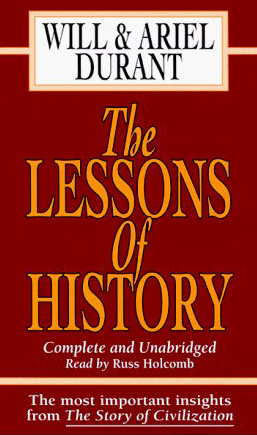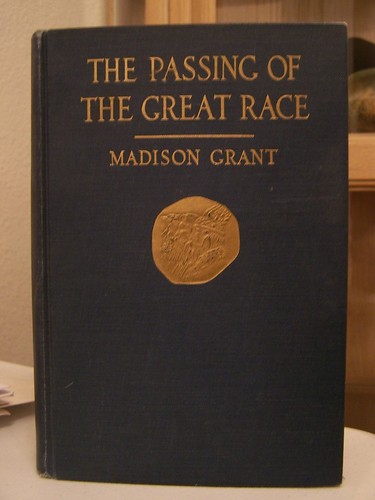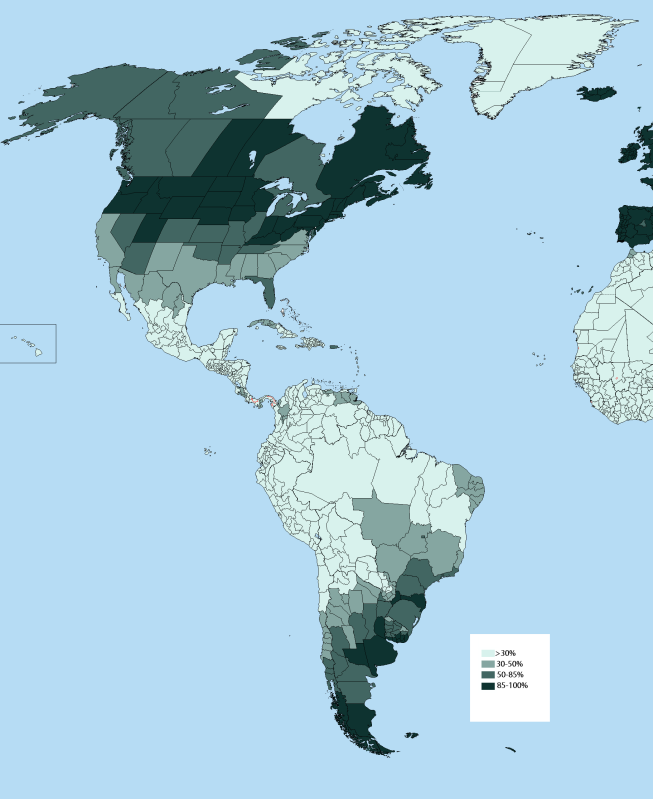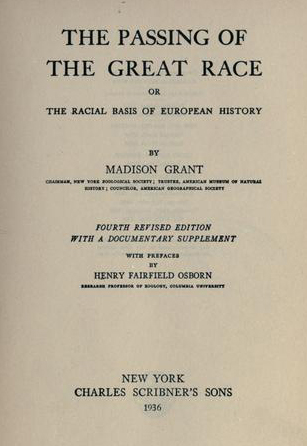https://www.youtube.com/watch?v=cYe_jcmY7QE&w=325&h=249
Below, “The New Enemies of Evolutionary Science,”
an article by Dr Phil Rushton (pic above):
On January 19, 1989, in the Sausalito Room of the San Francisco Hilton Hotel, my life changed forever. I stood before a lectern speaking to a symposium of scientists belonging to the American Association for the Advancement of Science (AAAS). The title of the brief paper I proceeded to present to the meeting was “Evolutionary Biology and Heritable Traits (With Reference to Oriental-White-Black Differences).”
I reviewed the international literature recently published in academic peer-reviewed journals. I summarized data about traits like brain size, temperament, speed of maturation, family structure, and reproductive variables. I tentatively concluded, roughly speaking, that East Asians, on average, were slower to mature, less fertile, less sexually active, with larger brains and higher IQ scores than Africans, who tended to the opposite in each of these areas. Whites, I found, fell between the other two groups.
I further contended that this orderly tri-level hierarchy of races in average tendency had its roots not only in economic, cultural, familial, and other environmental forces but also, to a far greater extent than mainstream social science would suggest, in ancient, gene-mediated evolutionary ones. Heredity, or nature—to use the term popularized by Francis Galton, Charles Darwin’s younger cousin—was every bit as important as environment or nurture, often more so.
To account for the racial pattern in brain size and the other “life-history variables,” I proposed a gene-based life-history theory familiar to evolutionary biologists as the r–K scale of reproductive strategy. At one end of this scale are r strategies, which emphasize high reproductive rates, and, at the other K-strategies, which emphasize high levels of parental investment. This scale is generally used to compare the life histories of widely disparate species but I used it to describe the immensely smaller variations within the human species. I hypothesized that Mongoloid people are, on average, more K-selected than Caucasoids, who in turn are more K-selected than Negroids.
I also mapped this theory onto human evolution. Molecular genetic evidence shows that modern humans evolved in Africa sometime after 200,000 years ago, with an African/non-African split occurring about 110,000 years ago, and a Mongoloid / Caucasoid split about 41,000 years ago. The farther north the populations migrated, “out of Africa,” the more they encountered the cognitively demanding problems of gathering and storing food, gaining shelter, making clothes, and raising children successfully during prolonged winters. As these populations evolved into present-day Europeans and East Asians, they did so by shifting toward larger brains, slower rates of maturation, and lower levels of sex hormone with concomitant reductions in sexual potency and aggression and increases in family stability and longevity.
I did not claim to have established the truth of these hypotheses. They may never by established in their entirety. But if they, or any part of them, or even any parallel hypotheses were eventually confirmed, we would have an explanation of why the measured traits are statistically distributed among racial groups in the distinct patterns evident in the data I had examined. The theories provided testable hypotheses and consequently complied with two fundamental goals of any science: the search to provide causal explanations of phenomena, and the search to unify separate fields of thought. These powerful incentives pulled me forward.
I emphasized two caveats in my presentation before the AAAS. First, because there is enormous variability within each population and because the population distributions overlap, it is always problematic to generalize from a group average to any particular individual. Secondly, because genetic efforts are necessarily mediated by neurohormonal and psychosocial mechanisms, many opportunities exist for intervention and the alleviation of suffering.
My hypothesis so stunned AAAS organizers that they quickly called a press conference to publicly dissociate themselves from my remarks. At the press conference, the president of the AAAS, Dr. Walter Massey, vice-president for research at the University of Chicago, told reporters that my credentials as a psychologist were good and that scholars participating in the conference were free to draw any conclusions they choose. Massey affirmed that the AAAS would never consider muzzling any scholar because the free expression of views was the essence of academic discussion. He went on to say that I had made “quite a leap of faith from the data to the conclusions” and that he found the paper “personally disturbing” and its conclusions “highly suspect.” The scene was eerily reminiscent of the closing sequence of the film Rosemary’s Baby with the media setting up to take pictures of the newborn devil, cloven hoofs and slit eyes, ready to raise hell on earth. I was about to become an academic pariah.
By the time I returned from the conference to my home in London, Ontario, and my job as professor of psychology at the University of Western Ontario, the uproar was in full swing. “Canadian Professor Provokes Uproar With Racial Theories,” proclaimed Canada’s national newspaper, the venerable Globe and Mail. “Theory Racist: Prof Has Scholars Boiling,” declared the influential Toronto Star. “UWO Professor Denies Study Was Racist,” trumpeted the local London Free Press.
Newspapers took my views to hostile social activist groups and got their predictably hostile opinion. They said I should be fired for promoting hatred. The press then took this idea to the president of the university who upheld the principle of academic freedom. The ongoing conflict was serialized for weeks. Student activist groups soon entered the fray, demanding that I meet with them in a public forum.
TV coverage of my theories juxtaposed photos of me with footage of Nazi storm troops. Editing and voiceovers removed any mention of my qualification that the race differences I had identified were often quite small and could not be generalized to individuals and didn’t mention that like any decent human being I abhor Nazi racial policies. Newspapers caricatured me as wearing a Ku Klux Klan hood or talking on the telephone to a delighted Adolf Hitler. The Toronto Star began a campaign to get me fired from my position, chastising my university and stating “This protection of a charlatan on grounds of academic freedom is preposterous.” Later, the same paper linked me to the Holocaust saying, “[Thus] there emerged the perverted ‘master race’ psychology of the 20th century, and the horror of the Holocaust. Oddly, the discredited theories of eugenic racism still are heard, most recently from an academic at an Ontario university.” I had no choice but to hire a prestigious law firm and issue notices under the Libel and Slander Act against the newspaper. This brought the media campaign against me to a halt.
Hate Crime Laws
In the U.S. there is a First Amendment to protect the right of every citizen to free speech and there is not much the government can do to silence unpopular ideas. In Canada and many Western European countries, however, there are laws against free speech, ostensibly enacted to inhibit “hate” and the spreading of “false news.”
Two weeks after my AAAS presentation, the premier of Ontario denounced my theories. My work was “highly questionable and destructive” and “morally offensive to the way Ontario thinks,” he said. It “destroys the kind of work we are trying to do, to bring together a society based on equality of opportunity.” The premier told reporters he had telephoned the university president and found him in a dilemma about how to handle the case. The premier said that he understood and supported the concept of academic freedom, but in this particular case dismissal should occur “to send a signal” to society that such views are “highly offensive.”
When the university failed to fire me, the premier asked the Ontario Provincial Police to investigate whether I had violated the federal Criminal Code of Canada, Chapter 46, Section 319, Paragraph 2, which specifies: “Everyone who, by communicating statements, other than private conversation, willfully promotes hatred against any identifiable group is guilty of an indictable offense and is liable to imprisonment for a term not exceeding two years.”
The police questioned my colleagues and members of the administration and professors at other universities, demanded tapes of media interviews, and sent a questionnaire to my attorney to which I was obliged to reply in detail. (There’s no Fifth Amendment in Canada either.) After harassing me and dragging my name through the dirt for six months, the Attorney General of Ontario declined to prosectue me and dismissed my research as “loony, but not criminal.”
This did not halt the legal action. Eighteen students, including seven Black students, lodged a formal complaint against me to the Ontario Human Rights Commission claiming that I had violated Sections, 1, 8, and 10 of the 1981 Ontario Human Rights Code guaranteeing equality of treatment to all citizens of the province. In particular, I was charged with “infecting the learning environment with academic racism.” As remedy, the complainants requested that my employment at the university be terminated and that an order be made requiring the university to “examine its curriculum so as to eliminate academic racism.”
I was outraged. A more flagrant attack on the right to freedom of expression was difficult to imagine in a supposedly free country. “Human rights” tribunals were becoming a menace—a direct threat to the very human rights and fundamental freedoms they were supposed to protect. The Ontario Human Rights Commission could no more change the truth about human races than could the Christian Inquistion about the solar system or the KGB about the genetics of wheat. I found it difficult to accept the increasingly obvious fact that in the post-Soviet world, an academic was freer to say what he believed about some things in Russia, than in Canada.
Four long years after the complaint was lodged, the Ontario Human Rights Commission abandoned its case against me claiming it could no longer find the complainants to testify.
Events at the University
In its relations with the outside world the university administration stood firmly for academic freedom. The president gave a press conference to state categorically that there would be no investigation of me, that I would not be suspended, and that I was free to pursue any line of research I chose.
Behind the scenes, however, I became the target of a witch hunt by some of the administrators. Dismayingly, my dean, a physical anthropologist, publicly declared that I had lost my scientific credibility and spearheaded an attack on me in the newspapers. She issued a series of preemptive statements making plain her negative opinion of me and my work.
“What evidence is there for this ranked ordering of the evolution of the human races?” she wrote. “None.”
Claiming that her views represented only her academic opinion she emphasized that she was not speaking in any administrative capacity. Her letter was nonetheless widely interpreted in the media as a refutation by my “boss.” Henceforth, in order to support me, a person would now have to go up against the dean in addition to prevailing opinion. Next, the chair of my department gave me an annual performance rating of “unsatisfactory” citing my “insensitivity.” This was a remarkable turnaround because it occurred for the same year in which I had been made a Fellow of the prestigious John Simon Guggenheim Foundation. My previous twelve years of annual ratings had been “good” or “excellent.” Indeed, my earlier non-controversial work had made me on of the most cited scholars in my university.
Because unsatisfactory ratings can lead to dismissal, even for a tenured professor like me, I contested the rating through various levels of grievance, wasting an enormous amount of time and emotional energy. The proceedings that followed were Kafkaesque, terrifying when they weren’t simply funny. For example, the grievance procedures required that I first appeal the Chairman’s negative assessment to the Dean. The Dean had already spoken out against me, so I asked the Dean to recuse herself from hearing the case. She refused. So I had to appear before her.
At my hearing, the Dean’s folded arms and glowers of fury made her decision obvious, and six weeks later, she upheld the Department Chair’s decision. In a seven-page letter justifying her decision, she cast aspersions at my “sensitivity,” and my sense of “responsibility,” and questioned whether ther were, in fact, “any” papers that had ever been published that had supported my perspective other than those I had written myself.
I decided on a more drastic defense. I wrote to colleagues around the world and received over 50 strong letters of support, many endorsing the evidence I had presented. When the Dean found out about this she went absolutely ballistic, on one occasion screaming and spitting at me in fury.
I eventually won my appeal against the Dean and the Chair and two separate grievance committeess chastised them for their actions against me. My annual performance ratings are back to receiving grades of “good” and “excellent.”
Some radical and Black students mobilized and held rallies, even bringing in a member of the African National Congress to denounce me. In one demonstration, a mob of 40 people stormed through the psychology department, banging on walls and doors, bellowing slogans through bull horns, drawing swastikas on the walls, and writing on my door “Racist Pig Live Here.”
The administration responded by barring me from the classroom and ordering me to lecture by videotape on the pretext that they could not protect me from the lawlessness of students. Again I launched formal grievances. After a term of enforced teaching by videotape, I won the right to resume teaching in person, though then I was required to run a gauntlet of demonstrators shouting protests and threats. Only after several forced cancellations of my classes did the administration warn the demonstrators that further action would lead to suspension and legal action. That brought the protests to a halt.
De Facto Censorship and the Corruption of Scholarship
As a graduate student at the London School of Economics and Political Science in 1973, I witnessed a physical assault on Hans Eysenck, who was studying the biological basis of intelligence and had recently published his book Race, Intelligence, and Education (1971). The slogan of that day was “Fascists Have No Right To Speak,” and Eysenck became a target for attack. No legal charges were brought for the widely witnesses assault because another popular slogan of the 1960’s, for those who approved the message but disapproved the tactic, was “There are no Enemies on the Left.”
 Stories of harassment and intimidation could be told by many others who have had the temerity to research topics that touch on the genetic or distributional basis of race differences.
Stories of harassment and intimidation could be told by many others who have had the temerity to research topics that touch on the genetic or distributional basis of race differences.
Today, many campus radicals from the 1960’s are the tenured radicals of the 1990’s. They have become the chairs of departments, the deans, and the chancellors of the universities: senior political administrators in Congress and Houses of Parliament, and even the presidents and prime mimisters of countries. The 1960’s mentality of peace, love, and above all, equality, now constitutes the intellectual dogma of the Western academic world. There are laws to prohibit platforms for those denounced as “fascists” and others deemed to be not politically correct.
In his book, Kindly Inquisitors, Jonathan Rauch showed that even in the U.S. with the First Amendment in place, many colleges and universities have set up “anti-harassment” rules prohibiting —and establishing punishments for— “speech or other expression” that is intended to “insult or stigmatize an individual or a small number of individuals in the basis of their sex, race, color, hankicap, religion, sexual orientation or national and ethnic origin.” (This is quoted from Stanford’s policy, and is more or less typical.) One case at the University of Michigan became well known because it led a federal court to strike down the rule in question. A student claimed, in a classroom discussion, that he thought homosexuality was a disease treatable with therapy. He was formally disciplined by the university for violating the school’s policy and victimizing people on the basis of sexual orientation.
In Canada and Western Europe, governments can and do prohibit speech on topics they consider obnoxious. In Denmark, a woman wrote a letter to a newspaper calling national domestic partner laws “ungodly” and homosexuality “the ugliest kind of adultery.” She and the editor who published her letter were targeted for prosectution. In Great Britain, the Race Relations Act forbids speech that expresses racial hatred, “not only when it is likely to lead to violence, but generally, on the grounds that members of the minority races should be protected from racial insults.” In some parts of the world you can be jailed, exiled, or even executed for expressing forbidden opinions.
Irrespective of religious background, or political affiliation, virtually all American intellectuals adhere to what has been called ‘one-party science.’ For example, only politically correct hypotheses centering on cultural disadvantage are postulated to explain the differential representation of minorities in science. Analyses of aptitude test scores and behavioral genetics are taboo. Cheap moralizing is so fierce that most people respect the taboo. This intellectual cowardice only encourages viscious attacks by activist groups on those who are engaged in legitimate scientific research showing that there is a genetic basis underlying individual and group differences.
The high-placed pervasiveness of the egalitarian orthodoxy is scary. Even more frightening than what happened to me is the experience of Christopher Brand, professor of psychology at Edinburgh University. On February 29, 1996, Brand’s book on intelligence, The g Factor, was published in the United Kingdom by the British subsidiary of John Wiley & Sons, Ltd. On April 14, newspaper reports of interviews with him began to appear saying that he thought black people had a lower IQ than did whites and that these were probably partly genetic. On April 17, Wiley’s company in New York denounced Brand’s views as “repellent” and withdrew the book from bookstores. A blizzard of “refutations” of Brand appeared in the U.K. media under outraged headlines. Protests from members of Parliament, student boycotts of his lectures, and calls for his resignation by faculty at the University of Edinburgh all predictably ensued. Brand’s refusal to be silenced and his defense of free speech led him to be fired (on August 8, 1997) for bringing his university into disrepute. There but for the grace God, go I.
In 1995, my monograph Race, Evolution, and Behavior was published by Transaction Publishers. Subsequently, the book was translated into Japanese (1996) and released as a softcover edition (1997) with an Afterword updating the science since the hardback went to press.
The book garnered a lead review in the New York Times Book Review (October 16, 1994) where Malcolm Browne, the Times science writer, discussed it along with Richard Herrnstein and Charles Murray’s The Bell Curve and Seymour Itzkoff’s The Decline of Intelligence in America. Browne concluded his analysis with the statement that “the government or society that persists in sweeping this topic under the rug will do so at its peril.” Dozens of other journals, including the National Review, Nature, and The Nation, also reviewed it.
Its publication by an important academic press touched off a new round of hysteria. A lurid article screaming “Professors of HATE” (in five-inch letters!) appeared in Rolling Stone magazine (October 20, 1994). Taking up the entire next page was a photograph of my face, hideously darkened, twisted into a ghoulish image, and superimposed on a Gothic university tower. In another long propaganda piece entitled “The Mentality Bunker” which appeared in Gentleman’s Quarterly (November 1994), I was misrepresented as an outmoded eugenicist and pseudoscientific racist. A photograph of me was published in brown tint reminiscent of vintage photos from the Hitler era.
Incredibly, Canada Customs seized and witheld copies of one shipment of the book for nine months while they tried to decide whether to condemn the book as “hate literature” and ban it from entering Canada. The fact that an academic book was even the subject of an investigation stunned my publisher: “I’ve never heard of such a thing,” said Mary Curtis, Chairman of the Board of Transaction. “This is not supposed to happen in Canada. The last time the company had trouble shipping scholarly works was in the mid-1980’s, when some books shipped to the Moscow Fair didn’t make it.”
Michel Cléroux, a spokesman for Canada Customs, said Customs were just following orders by investigating possible hate propaganda. A departmental policy prohibiting hate propaganda includes this definition: “Goods alleging that an identifiable group is racially inferior and/or weakens other segments of society to the detriment of society as a whole.” After an “investigation” lasting nine months, Canada Customs relented.
Harassment continued at another meeting of the American Association for the Advancement of Science. The AAAS routinely allows the militantly disruptive International Committee Against Racism (INCAR) and Progressive Labor Party (PLP) to have official “Exhibitor” status, along with a booth, at its annual meeting. At the February 1996 meeting in Baltimore, INCAR and PLP festooned their booth with posters of Karl Marx and signs taking credit for interfering with the University of Maryland conference on “Genes and Crime” in September 1995.
At the AAAS meeting, INCAR targeted my poster presenting a review of the literature on brain size and cognitive ability. When INCAR encountered me the day before the poster presentation, they yelled so many death threats that the AAAS called the Baltimore police, who dispatched an armed officer to stand by the presentation. Despite the guard, INCAR continued to utter threats. One demonstrator took photographs of me saying they were for a “Wanted: Dead or Alive” poster. “You won’t be living much longer,” he said. Incredibly, instead of cancelling the Exhibitor Status of organizations that threaten violence, the program director of the AAAS’s annual meeting said, in an interview published in The Scientist (March 4, 1996), that AAAS would tighten up the screening process to make it more difficult for presentations like mine to get on the program!
As Charles Murray has observed in the aftermath to The Bell Curve, social science is corrupt on the topic of race. Yet, the genetic hypothesis for the pervasiveness of the three-way racial pattern across so many traits, and which calls into question simple explanations based only on social factors like discrimination and poverty, needs to be discussed.
In his commencement address to the graduating class of 1997 at the University of California (San Diego), U.S. President Bill Clinton called for a new dialogue on race and for “deepening our understanding of human nature and human differences.” But apparently there are some aspects of human nature and human differences he’d rather leave unexplored.
I’ve learned a great deal since that day in 1989 when I stood before that meeting of scientists and presented a summary of my research, thereby making myself the target of harassment by the politically correct and the object of intimidation by the government of Canada. Despite the viscious campaign against investigation of the possible genetic basis of group differences, my interest never wavered. Work on other topics seemed shallow by comparison. Spurred by attacks and aided by colleagues, I have sought out more definitive tests of the genetic hypothesis and continue to publish my research.
I’ve also learned how important freedom of inquiry is to science, which must always remain to pursue truth without regard for where that pursuit leads. I’ve learned to treasure such remnants of freedom of speech as I enjoy as a citizen of Canada, and remain more committed than ever to the search for truth. As Benjamin Franklin observed more than two centuries ago, “Without freedom of thought, there can be no such thing as wisdom, and no such thing as public liberty, without freedom of speech.”










